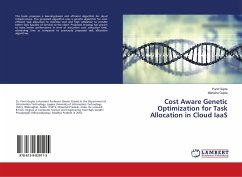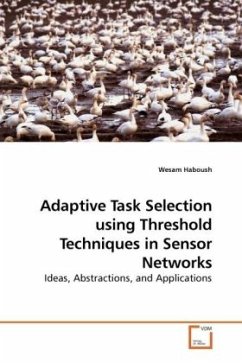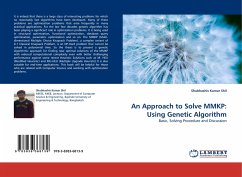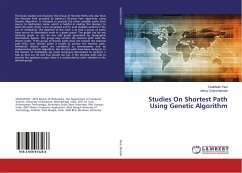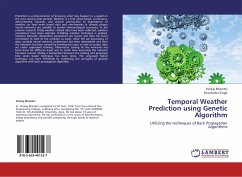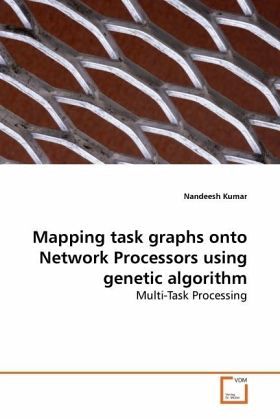
Mapping task graphs onto Network Processors using genetic algorithm
Multi-Task Processing
Versandkostenfrei!
Versandfertig in 6-10 Tagen
32,99 €
inkl. MwSt.

PAYBACK Punkte
16 °P sammeln!
This book presents an automated task schedulingtechnique to address this parallel programmingcomplexity. Our proposed technique is based on GA. Byincorporating tasks dependency into scheduling listand encoding task scheduling list as a chromosome, GAcan quickly remove the invalid mappings and evolve tothe high quality solutions. This technique takesadvantage of task-level and application-levelparallelism to maximize system performance for agiven NPs architecture. The simulation results showthat this proposed technique can generate highquality mapping comparing to other heuristics bymapping som...
This book presents an automated task scheduling
technique to address this parallel programming
complexity. Our proposed technique is based on GA. By
incorporating tasks dependency into scheduling list
and encoding task scheduling list as a chromosome, GA
can quickly remove the invalid mappings and evolve to
the high quality solutions. This technique takes
advantage of task-level and application-level
parallelism to maximize system performance for a
given NPs architecture. The simulation results show
that this proposed technique can generate high
quality mapping comparing to other heuristics by
mapping some sample network applications. This work
will also enable researchers and engineers to
systematically evaluate and quantitatively understand
the NPs system issues including application
partitioning, architecture organizing, workload
mapping and run-time operating
technique to address this parallel programming
complexity. Our proposed technique is based on GA. By
incorporating tasks dependency into scheduling list
and encoding task scheduling list as a chromosome, GA
can quickly remove the invalid mappings and evolve to
the high quality solutions. This technique takes
advantage of task-level and application-level
parallelism to maximize system performance for a
given NPs architecture. The simulation results show
that this proposed technique can generate high
quality mapping comparing to other heuristics by
mapping some sample network applications. This work
will also enable researchers and engineers to
systematically evaluate and quantitatively understand
the NPs system issues including application
partitioning, architecture organizing, workload
mapping and run-time operating



